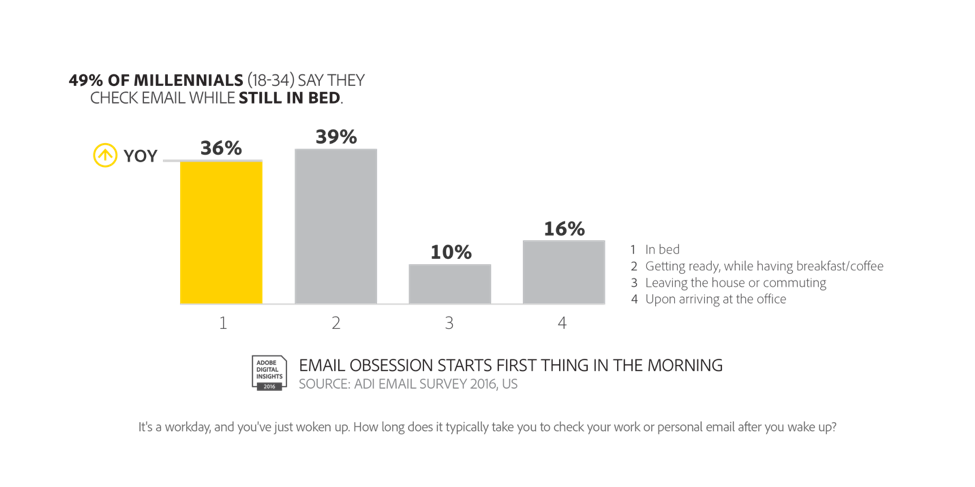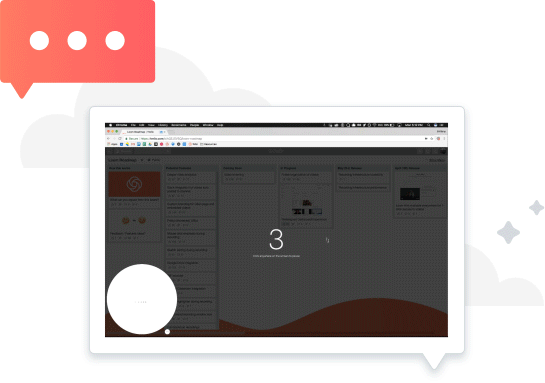A new era of corporate culture is upon us.
As the amount of time we’re spending in a “virtual workspace” continues to increase, employees are replacing face-to-face meetings and water cooler moments with video conferences and Slack messages. LinkedIn invitations are the new business handshake. You don’t even need to be in the same room with your employer to sign a contract anymore.
It’s safe to say that times have changed.
Despite this technological revolution, we shouldn’t forget one fundamental truth – people need a human connection when they communicate with other people. It’s only through authentic interactions that real relationships are built.
Unfortunately, workplace communication hasn’t evolved much from what’s been the go to solution for thousands of years – the written message. First, it was letters. Now, it’s emails.
The problem with written messaging is that it’s supposed to complement in-person communication, not replace it.
With the majority of our work taking place in the virtual world, emails and messaging have become the defacto way to communicate in the workplace.
We’re used to seeing technology and the internet as tools to help us better communicate with others. Our personal lives are filled with dynamic forms of communication.
From video calling relatives to enjoying a friend’s live update on social media – we know how to use technology to build deeper relationships and share our authentic selves in our social lives, even if we are thousands of miles apart from our friends and family.
So why can’t workplace communication be just as rich and personally fulfilling?
Corporate Culture is Alive and Well, For Now
Relying on an impersonal form of communication such as email is a reflection of a bigger problem in corporate culture. Change is often perceived as a threat to the established norms, instead of a way to facilitate progress.
Just like in our personal lives, our workplace needs to be constantly evolving to keep up with the latest trends and technologies. However, the shift is taking longer than it should, and as a result, employees are demotivated by antiquated corporate culture and longing for a change.
We can even find examples of this in science fiction. Fans of the popular Star Wars saga will remember the fateful moment when stormtrooper FN-2187 (Finn) deserted the Empire’s army to join the Rebels and was branded a traitor by his former peers.
Finn belonged to a faceless army, where everyone dressed the same, followed orders without question (or choice), and was reduced to a number. There was no room for individuality, personal expression, or change. No wonder he chose a more authentic existence, far, far away from the Empire.
Perhaps reflections of the Empire’s faceless regime can be found in today’s corporate culture. Like Finn, employees are at their happiest when they can be helpful to their peers and do their best work without sacrificing their individuality.
The movement to reclaim this freedom and fulfillment in the workplace is taking off. Join the Rebels.
The Beginning of Embracing Individuality in the Workplace
When two-thirds of our waking lives is spent working, it is crucial that we do so in a meaningful way. For most of us, this translates directly into having authentic connections to the people we’re working with.
Millennials aren’t happy when they feel like they have to fit into a mold, and they’re not going to unquestionably follow antiquated corporate rules. The new generation of workers are Finns, not stormtroopers.
Companies should encourage creative expression and promote each workers’ individuality as ways to nurture communities and help people succeed in the workplace.
Ensuring that workers remain engaged during their career is not an exact science. However, we do know that employee engagement is the cornerstone of a healthy company, while failing to promote that engagement will negatively impact your team and eventually hurt the business.
So how do we create the foundations for a workplace that cares about authenticity and embraces individuality? We can start with improving the way in which we communicate with each other at work.
Have We Reached Email Peak?
According to the Adobe Email Survey 2016, which surveyed over 1,000 working Americans, about 50% of the respondents aged 18-34 (a.k.a. your average millennial) check their email while still in bed.

This is a symptom of a generation that has become accustomed to a mundane form of communication.
The problem with email is that it strips away most human elements from communication.
Have you ever misinterpreted the tone of an email, or spent time agonizing whether or not to include an emoji in your response? You can’t hear, see or pick up on the subtle nuances from whom you’re talking to and, as a result, we’re reducing individuals to words on a screen. Really, it’s no wonder our message doesn’t always get across the way it was intended.
Emailing colleagues back-and-forth can feel like a chore; robotic, with barely any emotion or personality. We’d even go so far as to call it bland. And is that really a word you’d want to associate with something you spend literally hours of your day doing?
The nature of work is rapidly evolving and technology is physically driving us apart. We don’t see each other in person as much as we used to and, with recent studies anticipating that 50% of the U.S. workforce will be working remotely by 2020, we have to face the reality that corporate communication needs to change.
Workplace Communication Through a New Lens
See what we did there? As the leaders of the future, we have a unique chance to shape the evolution of work communication, improve it, and bring back its humanity.
It is estimated that people watch 500 million hours of YouTube every single day. We know a lot of that is probably adorable puppy videos, but even so, it means people are spending their time looking at the world through someone else’s eyes, learning new skills, or, in some cases, even fighting isolation and loneliness.
We know that billions of people are consuming video content in various formats on a daily basis. But when we think about it, creating and watching videos is still something we do in our personal time.
Taking into account the lasting popularity of video, it’s remarkable we’re still not using it to its full potential in our working lives.

Easily outperforming text and email in popularity, video is one of the most dynamic and engaging communication tools available. It brings stories to life with colorful dialogue and stunning visuals, effectively building an emotional connection between the viewer and the creator.
People can’t stop consuming video content, but workplace communication is still plain text.
At Loom, we believe there are many ways to foster more authentic communication between people at work and bring back its humanity. We all know that change is most effective when it comes from within, so we’d like to inspire you to start thinking about the future of your workplace.
We challenge you to use this blog as a way to arm yourself with the resources you need to inspire change in the way you communicate at work. And we will be here each step of the way to help and support you, too.
If you’re interested in receiving more content to help you enhance your workplace communication, make sure to subscribe to this blog and keep an eye on your inbox.
Big things are happening, and we wouldn’t want you to miss out! 😎

